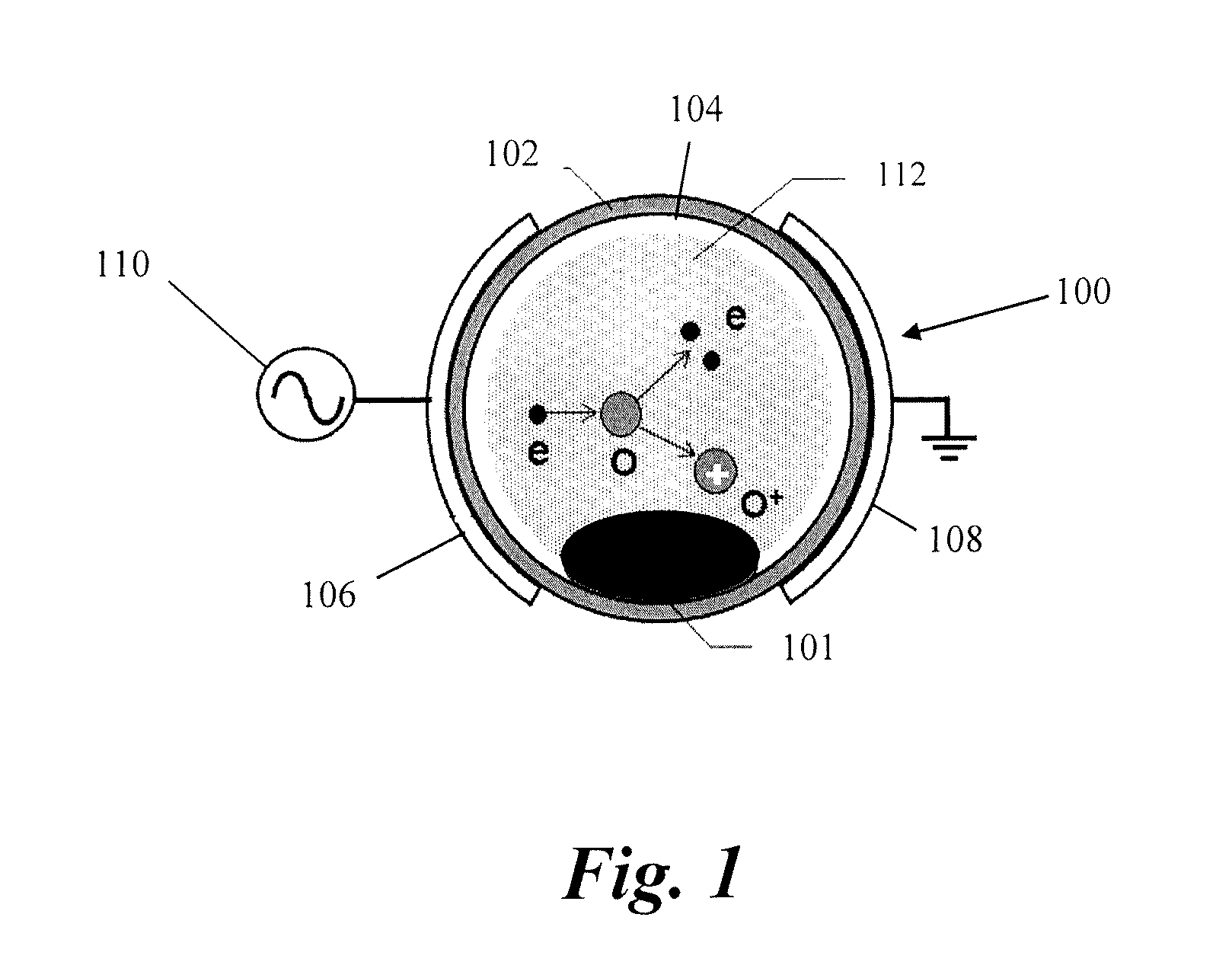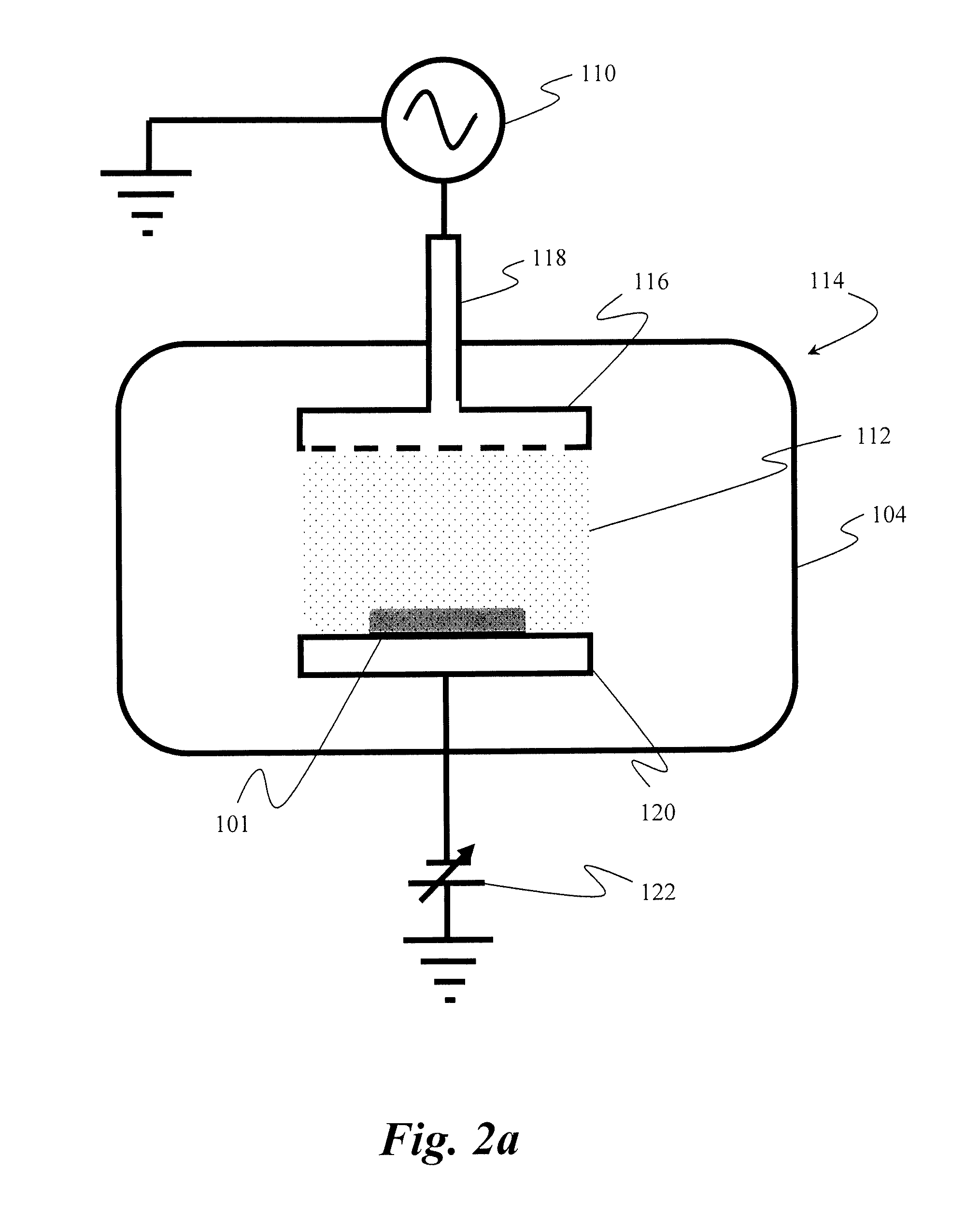Method for plasma activation of biochar material
a biochar material and plasma activation technology, applied in chemical/physical/physical-chemical processes, chemical apparatus and processes, energy-based chemical/physical/physical-chemical processes, etc., can solve the problems of high temperature, inefficiency, and high temperature of previous activation methods, and achieve the effect of reducing the number of steps, reducing the cost of treatment, and improving the quality of treatmen
- Summary
- Abstract
- Description
- Claims
- Application Information
AI Technical Summary
Benefits of technology
Problems solved by technology
Method used
Image
Examples
example 1
Oxygen Plasma Activation of Biochar
[0061]FIGS. 4a through 4c show scanning electron microscope (SEM) images of untreated, oxygen plasma activated, and chemically activated yellow pine biochar respectively. The chemically activated sample of FIG. 4c was prepared by mixing NaOH and biochar at a 2:1 ratio, and then baking the mixture at 950° C. for 2 hrs in a nitrogen atmosphere. After cooling down to room temperature, the activated biochar was washed with 0.1 mol L−1 HCl and deionized water to reach a pH of 7, and then dried at 105° C. for 12 hours.
[0062]The plasma activation was conducted for 5 minutes using oxygen gas within vacuum chamber 104 at a pressure of 2 Torr. Excitation power of 50 W was applied at a radio frequency (RF) of 13.56 MHz. No external heating was used.
[0063]As depicted in the SEM image of FIG. 4a, the untreated biochar 101 contained a mixture of small and large particles. After the plasma activation, as depicted in the SEM image of FIG. 4b, the biochar surface b...
example 2
Supercapacitors Using Oxygen Plasma Activated Biochar
[0070]Described below are examples of supercapacitors prepared using the treated and untreated biochar 101.
[0071]As depicted in FIG. 12, supercapacitor 160 generally includes enclosure 161 which includes CR2032 coin case cell lid 162, CR2032 coin case cell base 164, electrodes 166 which generally include substrate 168 and biochar component 170, and separator 172. Substrates 168 were nickel foam (EQ-bcnf-80 um from MTI Corp.). Biochar components 170 were formed from slurry made from biochar 101. The biochar slurry was prepared using both treated and untreated biochar 101 mixed with polytetrafluoroethylene (PTFE) polymer in a mass ratio of 8.5:1.5 for biochar and PTFE respectively. To form electrodes 166, the biochar slurry was pressed onto the nickel foam substrate 168. Electrodes 166 were cut from the biochar coated nickel foam into a circular shape with a diameter of 1 cm. The biochar component 170 mass loaded on the nickel foam ...
example 3
Methane Plasma Activation of Biochar
[0076]Commercially activated biochar YP-50F (Kuraray Chemicals) was used in this example. YP-50F was synthesized from coconut and originally activated using steam at high temperatures. The YP-50F was then plasma treated to further improve performance.
[0077]The plasma activation of YP-50F was conducted using methane (CH4) gas mixed with argon (Ar) at a volumetric ratio of 10% methane. The gas pressure was about 10 Torr. The RF power was 50 W, at a frequency of 13.56 MHz. The activation was performed for 5 minutes without external heating. For comparison, oxygen plasma activation was also performed under the same process conditions.
[0078]Table 2 below shows the BET surface area of YP-50F before and after the plasma treatment, as well as the specific capacitance and impedance of supercapacitors 160 made of the treated and as-received YP-50F. Methane plasma treatment appeared perform better than oxygen plasma treatment for YP-50F because it led to sig...
PUM
| Property | Measurement | Unit |
|---|---|---|
| pressure | aaaaa | aaaaa |
| pressure | aaaaa | aaaaa |
| frequency | aaaaa | aaaaa |
Abstract
Description
Claims
Application Information
 Login to view more
Login to view more - R&D Engineer
- R&D Manager
- IP Professional
- Industry Leading Data Capabilities
- Powerful AI technology
- Patent DNA Extraction
Browse by: Latest US Patents, China's latest patents, Technical Efficacy Thesaurus, Application Domain, Technology Topic.
© 2024 PatSnap. All rights reserved.Legal|Privacy policy|Modern Slavery Act Transparency Statement|Sitemap



